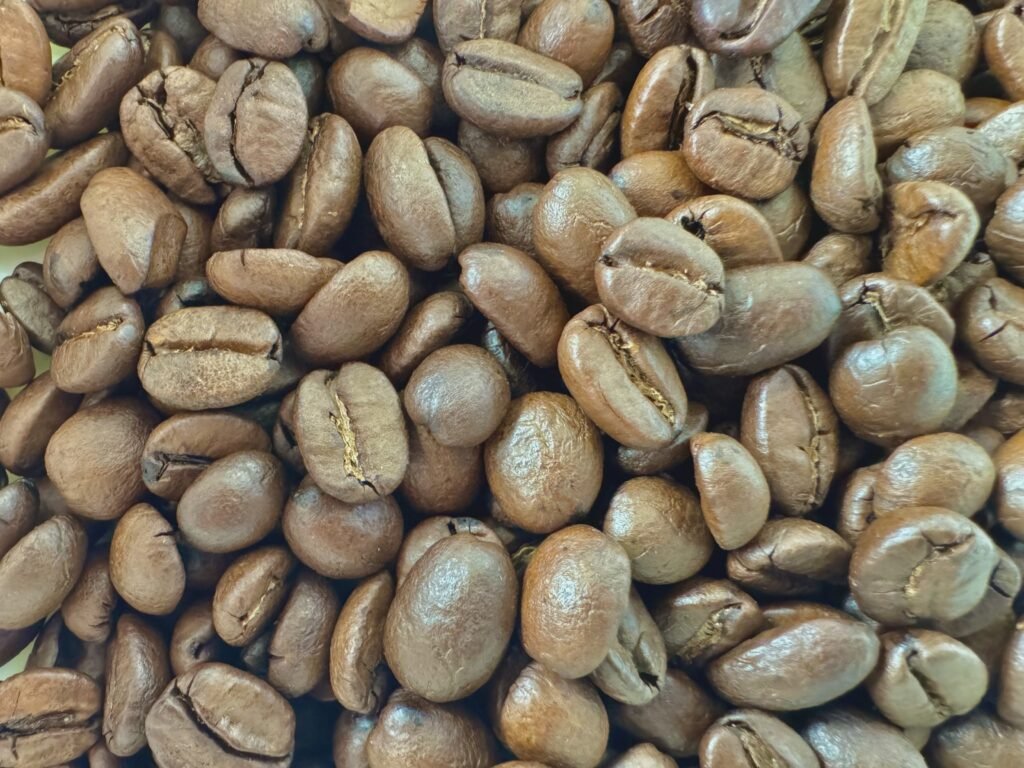This article answers the question of why coffee tastes different in Spain by explaining the torrefacto roasting method sometimes used to produce Spanish coffee.

I was inspired to write this article after a recent trip to Spain where I tried many different coffees from different cities. If you’ve found yourself in this article, I’m guessing you just searched “Why does my coffee taste different in Spain?”, or maybe even “Why does my coffee taste so bad in Spain?”. Well, look no further because I’m here to tell you.
So I was traveling throughout the south of Spain, and per my usual, I like to have a coffee in the morning and the afternoon. Much to my surprise, I was left quite disappointed after each coffee. All I have ever heard online and from friends and family is that Spanish coffee is delicious, and nothing can beat a classic café con leche! But let me tell you, no matter what form I tried, the coffee was consistently too bitter and too sour at the same time.
Naturally, I took to doing some research and asking around because I needed to figure out if I was making things up, or if there was something to my inclination that the Spanish coffee tasted different and off. Because after hitting a certain sample size, I was starting to portray Einstein’s definition of insanity- continuing to buy coffees over and over again and expecting a different result!
Well, the good news for me is that there is an answer to why coffee tastes different in Spain and a reason why I perceive Spanish coffee as having a strange taste. That reason is defined as “torrefacto”.
✈️ My Travel Essentials – What I Actually Use & Recommend! 🌍
I’ve traveled extensively and use these tools on every trip. They’ve saved me money, time, and headaches, and they’ll do the same for you! 👉 Book smarter & save more 🚀
✅ 🏨 Best Hotel Deals → Expedia
I book all my hotels through Expedia because they offer cash-back rewards and some of the lowest rates online. Tip: activate Rakuten for extra cashback and $30 free.
✅ 🎟️ Skip-the-Line Tours & Unique Experiences → Get Your Guide
Want to avoid lines and overpriced tourist traps? I use Get Your Guide to book skip-the-line passes, tours, and hidden gem activities. Use my link for 10% off your first booking!
✅ 📱 Stay Connected Without Roaming Fees → Airalo
No more SIM card hassle! I use Airalo’s cheap, reliable eSIMs to stay connected instantly in over 200 countries. Use my promo code AIRALOESIM10 for 10% off!
Short on time? Here’s the main takeaway:
The torrefacto roasting method commonly used throughout Spain can lead to coffee tasting different from what you may be used to. Some people taste these beans as burnt or sour, due to sugar being added to the coffee beans during the roasting process.
Table of Contents

What is torrefacto?
Torrefacto coffee is a specific type of coffee that has undergone a unique roasting process in which sugar is added to the green coffee beans while they are roasting. Essentially what happens is the sugar caramelizes during the roasting process, giving them a unique flavor. However, due to the high temperatures, the sugar can also burn. The extent to which the sugar burns or caramelizes varies between roasters. The goal is to ‘glaze the beans’.
Torrefacto beans are typically mixed in with traditionally roasted coffee beans. The original use of this goes back to the 1920s as a cheaper way to preserve and mask lower-grade coffee.
This roasting technique is very common in parts of Spain, and many coffees there will have a blend of torrefacto beans and traditionally roasted beans. Take a look at the coffee bags in the grocery store to see what blend you’re getting. Torrefacto coffee is also fairly common in some other countries, such as Mexico, Costa Rica, and Argentina, to name a few.

Traits of Torrefacto roasted coffee
As a result of adding sugar when roasting, torrefacto coffee gains certain traits that can be defined and identified by:
- Shiny exterior: torrefacto coffee beans are typically very dark and shiny. Traditionally roasted beans are light brown like the ones pictured above.
- Bitter flavor: torrefacto coffee can have a more bitter and burnt flavor compared to other roasting styles.
- Sweet flavor: the sugar can make the torrefacto coffee taste sweeter than normally roasted beans, and can mask the coffee flavor.
- Lower acidity: torrefacto coffee typically has a lower acidity than other roasting styles due to the sugar coating.
- Antioxidants: torrefacto roasted coffee is thought to be higher in antioxidants than traditionally roasted coffee.
I personally love the flavor of coffee on its own and am not a big fan of sugar in my coffee. So, upon learning about torrefacto, it made sense why I was not enjoying the coffee I was trying in Spain.
It also may be worth considering that some roasters probably get away with using lower-quality coffee beans when they use the torrefacto method because there is so much sugar that it is easily covered. This is not a fact, just my speculation, but could be another reason why coffee tastes different in Spain.

Coffee is cultural and flavor is subjective
Now that you know about torrefacto, you might be thinking “So what, all coffee in Spain is bad then?”. Absolutely not! I’m not one to ever generalize, and the same applies to Spanish coffee. Only some coffee you find in Spain is roasted using the torrefacto method. I just happened to hit a streak of encountering only torrefacto-roasted coffee on my recent travels. That being said, once I found out why coffee tastes different in Spain I ventured further and found many wonderful spots with outstanding coffee and espresso that better matched my palette.
I want to emphasize that not liking torrefacto coffee is just my opinion! You may love Spanish torrefacto coffee more than anything, and that is great! Taste is subjective and a lot of people love and are very enthusiastic about the torrefacto practice, hence its widespread use in Spain. It is not my personal favorite, so I wanted to share this knowledge in case you are like-minded in that opinion. Preference for torrefacto coffee varies, and is ultimately a matter of personal taste.
Coffee is a big part of the culture in a lot of countries, especially Spain. This culture varies from region to region, but a trip will show you that in Spain, coffee isn’t just a drink—it’s a cherished part of daily life and social gatherings. That being said, give some torrefacto coffee a try on your next trip!
Conclusion – why coffee tastes different in Spain
Now that you know about torrefacto, you can avoid it if you dislike it and seek it out if it’s your thing. Let me know what you think of torrefacto coffee! I’d love to hear your opinion on the matter.
By the way, if you are looking for a cool third-wave coffee spot in Spain and find yourself in Seville, pay a visit to Delatribu Coffee. I found this hidden gem of a coffee shop after a sprint of torrefacto research while visiting the city. They even have the famous geisha pour-over!

Last Updated:
Disclaimer: This article is intended to be for informational purposes only and may contain affiliate links. Refer to the full disclaimer for more information.



